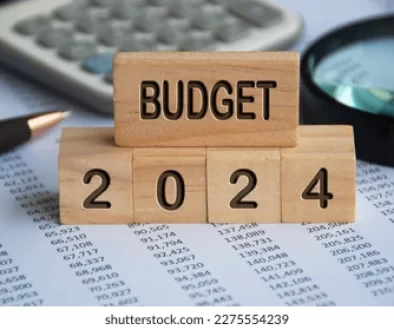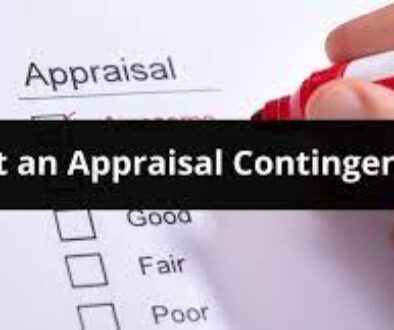Fixed Rate Mortgage
If you’re new to the home buying game, you’re probably astonished at the amount of new lingo you need to learn. Do you want a fixed-rate or an adjustable-rate mortgage? And once you’ve figured that out, you need to determine what term works best for you. Is it 15 or 30 years or somewhere in between?
Before you can decide which type of mortgage is right for you, you need to learn more about your options. If you’re no fan of surprises and enjoy predictable payments, a fixed-rate mortgage may make sense for you. We’ll explore everything you need to know about fixed-rate mortgages and how they work.
What Is A Fixed-Rate Mortgage?
A fixed-rate mortgage is a home loan option that offers a single interest rate for the entire term, or length, of a loan. The interest rate on the mortgage never changes over the loan’s lifetime, keeping the borrower’s interest and principal payments the same month to month.
Changes in the market won’t impact the rate, which explains why fixed-rate mortgages are the most popular mortgages in the U.S.
How Does A Fixed-Rate Mortgage Work?
When it comes to fixed-rate mortgages, the name says it all.When you get one of these mortgages, your interest rate stays the same the entire time you pay off the loan. In other words, the interest rate is fixed.
Pros And Cons Of Fixed-Rate Mortgages
Fixed-rate home loans are the backbone of the mortgage industry for a lot of good reasons.
Pro: Consistent Payments Make Budgeting Easy
The main benefit of a fixed-rate mortgage is that your monthly mortgage payment – the amount you pay toward your mortgage principal and interest – will remain the same throughout the life of the loan.
However, two other parts that make up your monthly mortgage payment – homeowners insurance and property taxes – can go up or down, and your overall payment will change to reflect the new amount. These factors are outside your lender’s control, but your monthly mortgage payments will probably include these expenses. Your lender holds the additional expenses in an escrow account and pays them for you when they’re due. Having a lender take care of making these payments can help make your life easier, and it prevents missed property tax or insurance payments that can become a huge headache.
Pro: Your Loan Fully Amortized Over The Term Of The Mortgage
As you learn about fixed-rate mortgages, you’ll also hear the term amortization. Mortgage loans typically have a set length of time that dictates when they’ll be paid off.
For example, with a 30-year fixed-rate mortgage, after 30 years of on-time, monthly payments, your mortgage will be fully paid off. Because the rate is fixed, you’ll know exactly how much interest you’ll pay over the life of your loan. And because the mortgage term is 30 years, you’ll enjoy a low payment relative to the total loan amount.
How Does Amortization Work?
In the first few years of making mortgage payments, the majority of your payment will go toward paying off interest rather than the principal (the total loan amount).
Let’s say you have a fixed-rate loan, and your monthly payment is $1,500. When you begin paying off your mortgage, $1,400 of the $1,500 payment may go toward interest, and $100 will go toward the principal. But as you progress through the life of your loan, the payment allocation gradually shifts. At one point, you may pay an equal amount in interest and principal. By the end of the loan’s amortization schedule, you’ll pay more principal than interest. Toward the end, you may be paying $1,400 toward the principal and $100 in interest.
Con: You’ll Pay A Little More Initially
Fixed-rate mortgages have higher rates than the introductory rates adjustable rate mortgage offer. You pay a bit more in exchange for the peace of mind provided by a low rate that’s locked in the entire time you’re paying off the loan.
How Long Are Fixed-Rate Mortgage Terms?
A loan’s term refers to how long it takes to pay it off. The most common loan terms for fixed-rate mortgages are 30 and 15 years. Each mortgage term has its pros and cons.
30-Year Fixed
30 year fixed rate mortgages are the most popular home loan option for borrowers. You keep monthly payments nice and slow by choosing a lengthy loan term, even with a slightly higher interest rate. While there are rare exceptions, the longer the mortgage term, the slightly higher rate you’ll get.
However, borrowers can save money on interest by choosing a shorter term mortgage. 30 year mortgages are often the most affordable option for home buyers who are more concerned about keeping their monthly housing costs down than the overall cost of the loan.
If you’re considering a 30-year mortgage term, think about what’s more important: lower monthly payments or paying off your loan faster and paying less in interest over the life of the loan. You can get help answering this question using our mortgage calculator.
15-Year Fixed
When you opt for a 15-year mortgage term, you’ll save quite a bit of money on interest compared to a 30-year mortgage. 15-year fixed-rate loans typically have lower rates than 30-year loans, and because the loan has a shorter amortization period, you’ll save even more on interest. In fact, the difference in savings still would be the case even if the interest rate on the 15 year loan and the 30-year loan were the same.
30-Year Fixed Vs. 15-Year Fixed Example
Let’s say you’re approved for a 30-year fixed mortgage for $250,000 with an 8% interest rate. You’ll pay around $328,909 in interest over the life of the loan. Now take the same situation but swap the 30-year loan for a 15-year loan. For a 15-year loan, the total interest paid will be around $144,085.
In our examples, both loans have an 8% mortgage rate. But the reality is that the 15-year loan would likely have a lower rate than the 30-year loan because its term is shorter, so you would probably pay less interest than we calculated in our example.
Seems like the 15-year is the obvious choice, right? Not so fast. You need to factor in the monthly payment. With a 15-year loan, your monthly payment would be around $1,911, not including taxes and insurance. With a 30-year loan, your monthly payment would be significantly more affordable at $1,467.
If you can afford the larger payments and are primarily interested in building equity and paying off your home quickly, the 15-year may be a better choice. It all depends on what you can comfortably afford.
If you still aren’t sure which loan term is best for you, it’s always a good choice to pick the loan that allows you the most financial flexibility for your short- and long-term needs and goals.
Other Fixed-Rate Mortgage Terms
Some lenders may offer other fixed-rate loan terms that better fit your needs. Perhaps you’re looking for a loan that balances the affordability of a 30-year term with the interest-saving benefits of a 15-year loan. 20 year mortgages fit the role, and while they aren’t as popular as 15-year and 30-year loans, they are another option for borrowers.
What Are The Differences Between Fixed-Rate And Adjustable Rate Mortgages (ARMs)?
Deciding between a fixed rate mortgage or an ARM will depend on several factors.
With an ARM, you’ll likely pay a lower interest rate during the introductory period, which can vary in length. After the fixed-rate introductory period, the rate on an ARM can adjust up or down based on market conditions.
ARMs Have Risks
The risk with an ARM is that interest rates may go up. When that happens, you’ll pay more in interest every month. If you apply for a mortgage while interest rates are high, you may be making a good bet that rates will likely come down. If mortgage rates are low, you may be better off with a fixed-rate mortgage.
ARMs Are Cheaper Upfront
Fixed-rate mortgages typically have slightly higher rates than ARMs. However, once the low introductory rate period is over, your rate may increase, causing your monthly payments to go up. On the other hand, if rates go down when your ARM adjusts, you may save even more with an ARM.
ARMs Make Sense For Shorter Home Stays
An ARM’s low introductory rate can be very tempting, especially if you don’t plan on living in a home for a long time. An ARM’s fixed introductory rate typically lasts the first 5, 7 or 10 years of the loan. If you plan on selling your house before the rate adjusts, you can save money with an ARM and when interest rates are relatively high, an ARM can help you secure a lower rate.
Is A Fixed-Rate Mortgage Right For You?
Fixed-rate mortgages are prized for their stability. If you want to put your monthly mortgage payments on autopilot or interest rates are low, a fixed-rate loan may make a lot of sense.




